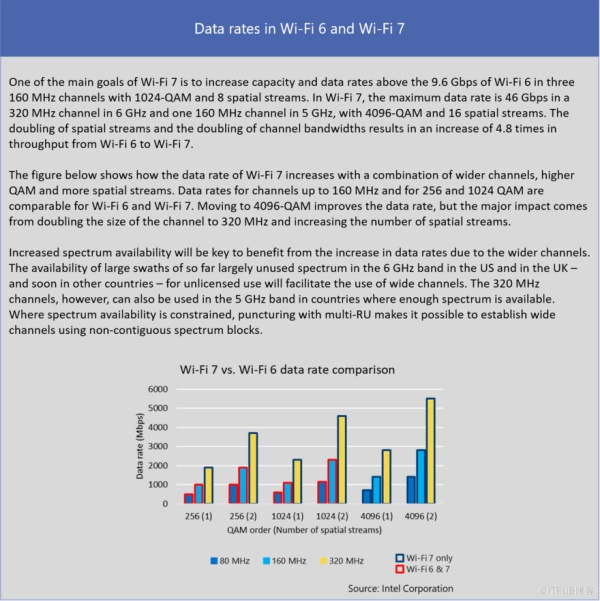Wi-Fi 7: The next generation of Wi-Fi evolution
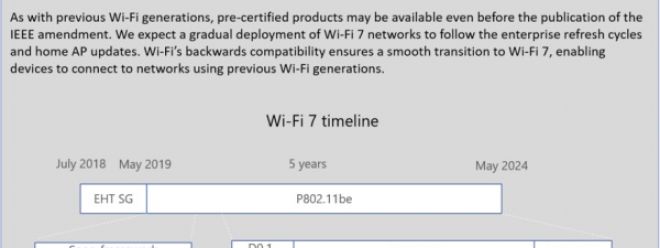
Although Wi-Fi 6 has just been launched, as the next
generation of Wi-Fi, Wi-Fi 7 has been mentioned, continuing a technological
evolution. What new features and functions will Wi-Fi 7 provide? Who needs
Wi-Fi 7? When will it be launched?
Although Wi-Fi 6 has just been launched, as the next
generation of Wi-Fi, Wi-Fi 7 has been mentioned, continuing a technological
evolution. What new features and functions will Wi-Fi 7 provide? Who needs
Wi-Fi 7? When will it be launched? Here, we introduce the overview of Wi-Fi 7
and what it will bring to Wi-Fi users Expected benefits. Technology continues
to evolve, and the evolution never stops. The more successful the technology,
the more it is necessary to continuously improve the user experience. Wi-Fi is
undoubtedly one of the most successful wireless technologies.
Wi-Fi must continue to improve performance, increase spectrum efficiency, reduce costs, and most importantly, make the user experience better in order to maintain its prominent position. Compared with 5G, Wi-Fi allows us to connect to the network and expand the coverage of the network. This is why even though Wi-Fi 6 only started commercialization in 2019, work on the next generation of Wi-Fi 7 has already been carried out in the IEEE 802.11 Ultra High Throughput (EHT) working group.
Wi-Fi 7 has ambitious goals and must meet our growing
network connectivity needs. IEEE has a lot of work to do, and plans to approve
and release the 802.11be amendment in the middle of 2024. We expect to see
relevant commercial equipment and the Wi-Fi Alliance’s certification program at
the same time to ensure interoperability.
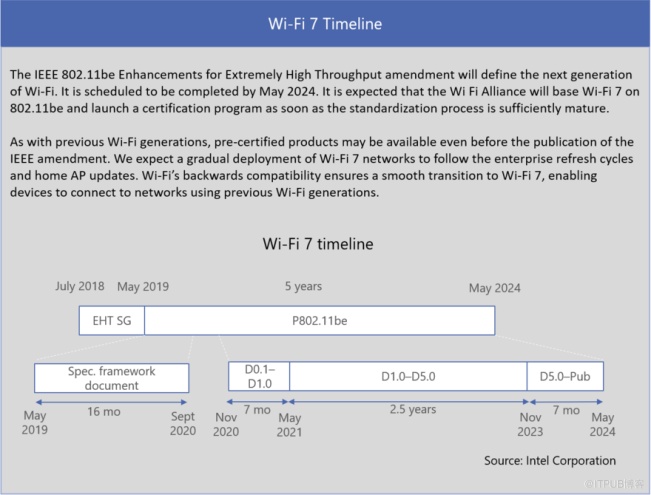
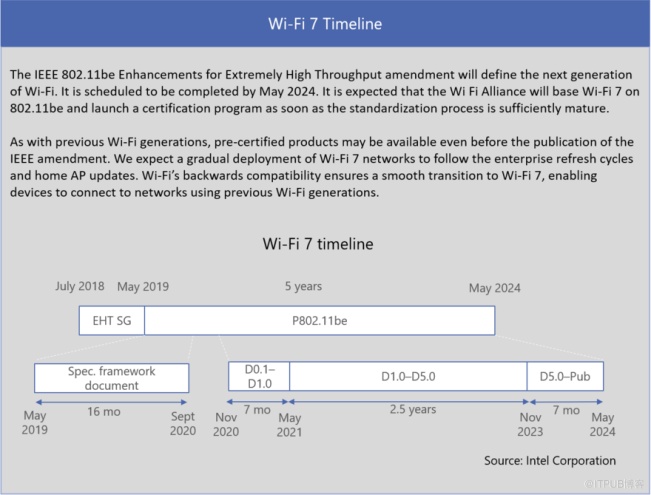
Although Wi-Fi 7 has not yet arrived and many new features
are still being defined, the progress of the new standard shows us the
trajectory of the development of Wi-Fi technology, what we can expect from it,
and the speed of change. Wi-Fi 6 marks a big step forward on the basis of Wi-Fi
5. The following table shows the Wi-Fi evolution model. The improvements in
Wi-Fi 6 go far beyond the increase in throughput. It fundamentally changes the
way Wi-Fi transmits and manages traffic, which improves the overall quality,
reliability and security of the technology.
Wi-Fi 7 will develop in the same direction. It will still
use OFDMA, but it will enhance it, make it more flexible and efficient, and
increase the option to use 4096-QAM. MU-MIMO will support 16 spatial streams,
which is more than the 8 spatial streams of Wi-Fi 6. The maximum channel size
(320Mhz) has doubled, making Wi-Fi 7 ideal for accessing the 6GHz frequency
band, which is a recently added frequency band for unlicensed use and is
supported by Wi-Fi 6E. The new features of Wi-Fi 7 have brought a huge increase
in the maximum data rate-46Gbps, although higher data rates may be achieved in
certain environments and configurations. Wi-Fi 7 will also bring lower latency
and increase the flexibility of using network and spectrum resources.
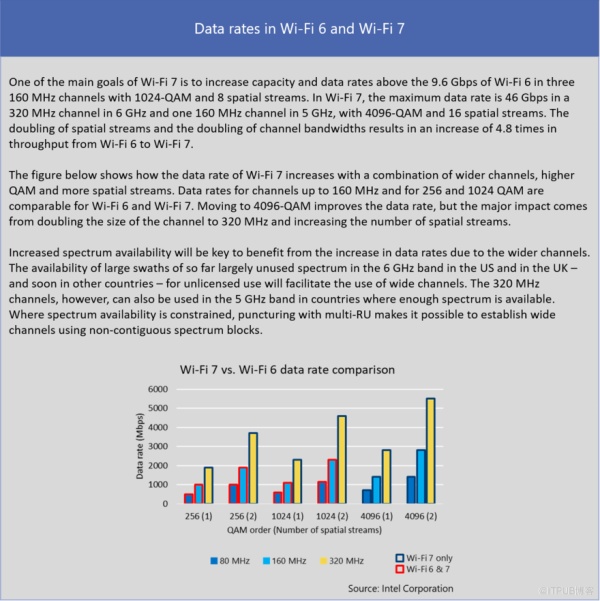
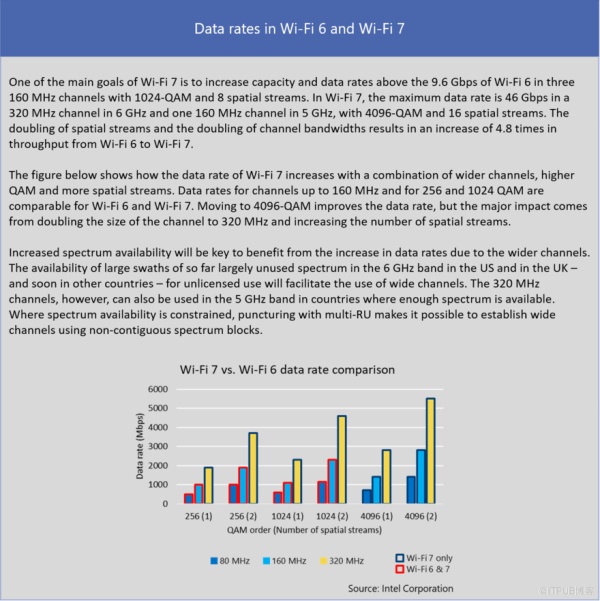

The performance and efficiency improvements promised by
Wi-Fi 7 are impressive, but do we need them? Is Wi-Fi 6 not good enough? Wi-Fi
7 specifications are based on scenarios with strict latency and reliability
requirements of. Today, Wi-Fi 6 meets the needs of these scenarios, but the
enhancements of Wi-Fi 7 will enable Wi-Fi to expand as the adoption rate, that
is, the increase in traffic density and the more stringent requirements. Wi-Fi
7 provides a way forward to ensure that Wi-Fi maintains scalability to carry
the ever-increasing traffic load and continue to meet user requirements.
Wi-Fi 7 brings more flexibility and capabilities to
enterprises as they are embarking on digital transformation. Wi-Fi 7 and
3GPP-based 5G will work together to introduce edge computing, distributed and
cloud architecture, virtualization and digitization in the emerging private
wireless network (PWN). More specifically, Wi-Fi 7 will improve support for
applications that require deterministic delay, high reliability, and quality of
service (QoS).
In enterprises, this will benefit IoT and IIoT applications such
as industrial automation, surveillance, remote control, AV/VR and other
video-based applications. Consumer users can benefit from Wi-Fi 7 games, AV/VR
and video applications, and smart home services.
Except for specific scenarios, Wi-Fi 7 will continue to
expand the availability of Wi-Fi and transmit most of the wireless traffic in a
cost-effective manner in enterprise, public and residential environments, and
further improve the efficiency of the use of valuable spectrum resources.
